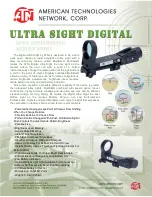
21
Instruction manual
Starscopes on azimuthal mount
1. How far can I see with my telescope?
That depends largely on how dark the sky is.
From the city you can comfortably see the
brightest planets (a few hundred million kilo-
meters). Beyond the solar system, because
of the huge distances, we no longer calculate
in kilometers, but in light years. One light year
is nearly 10 trillion kilometers! With the naked
eye you can see stars which are some light
years to some hundred light years away.
2. I see nothing when I look through my
telescope, what am I doing wrong?
Observing through a telescope takes practi-
ce. Initially, you will notice detail only in the
brightest objects. However, with each obser-
vation you will be able to see more detail and
objects that were previously „invisible“ will
suddenly become visible.
If you do not see anything at all, please check
the following:
• Is the dust cover completely removed?
• Is the magnification too high?
• Is the object in the field of view?
If in doubt, point the telescope at an object
that is easier to see to make sure there is no
technical problem.
3. the image becomes very dark when I
choose a high magnification. Why?
The higher the magnification, the darker the
image will be for geometric reasons. If you
find the image too dark, simply choose an
eyepiece with lower magnification (= longer
focal length).
4. The celestial objects move when I
observe them through my telescope and
disappear from the field of view. Why?
In truth, it is not the celestial objects that
move, but it is our Earth itself that rotates
on its own axis. Therefore, in 24 hours all
celestial objects „wander“ once completely
around the earth. With the naked eye this
movement is not visible, but with a telescope
you enlarge the image so much that the mo-
vement becomes clearly visible. To follow the
celestial objects, you must therefore move
the telescope along on the mount at regular
intervals.
Frequently asked questions
Optics:
Achromatic doublet
Aperture:
70 mm (Starscope 707)/76 mm (Starscope 767)
Focal length:
700 mm
Resolution:
1,64” (Starscope 707)/1,53” (Starscope 767)
Limiting magnitude: 11,2 mag (Starscope 707)/11 mag (Starscope 767)
Focuser:
1,25” gear drive
Mount:
Azimuthal mount with height fine adjustment
Tripod:
Height adjustable aluminum tripod (up to 120 cm)
Technical Data




























